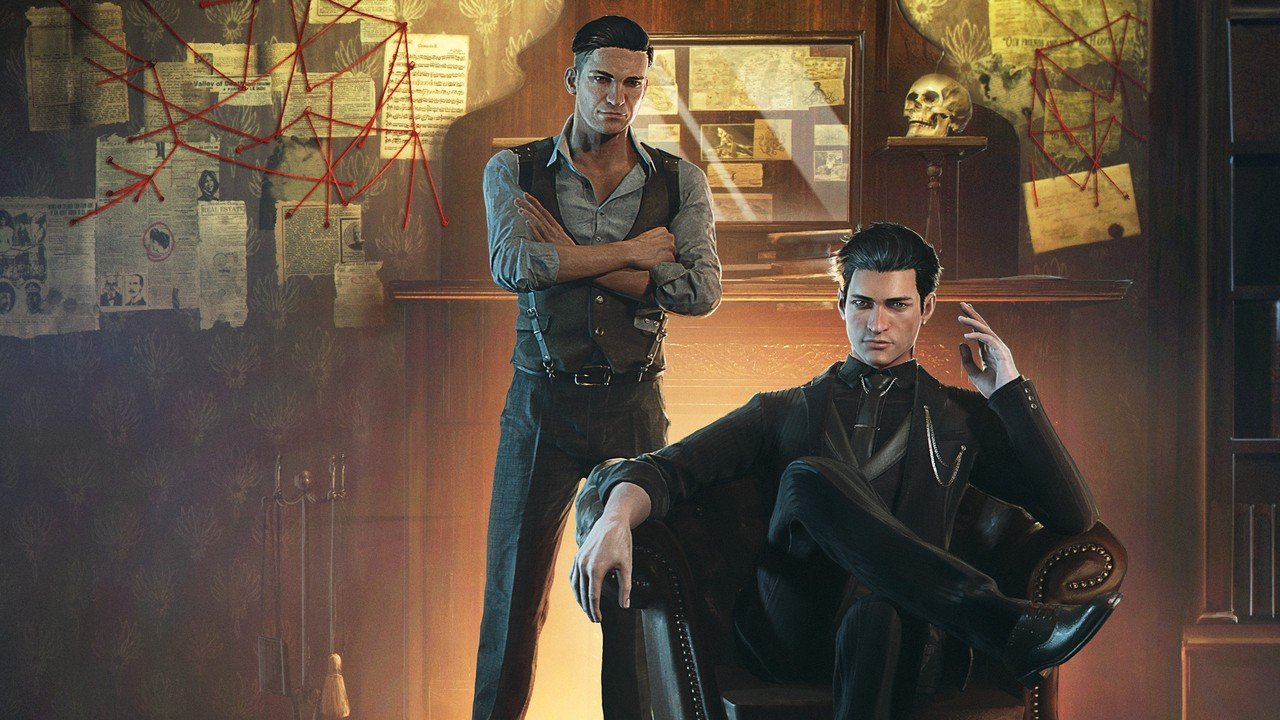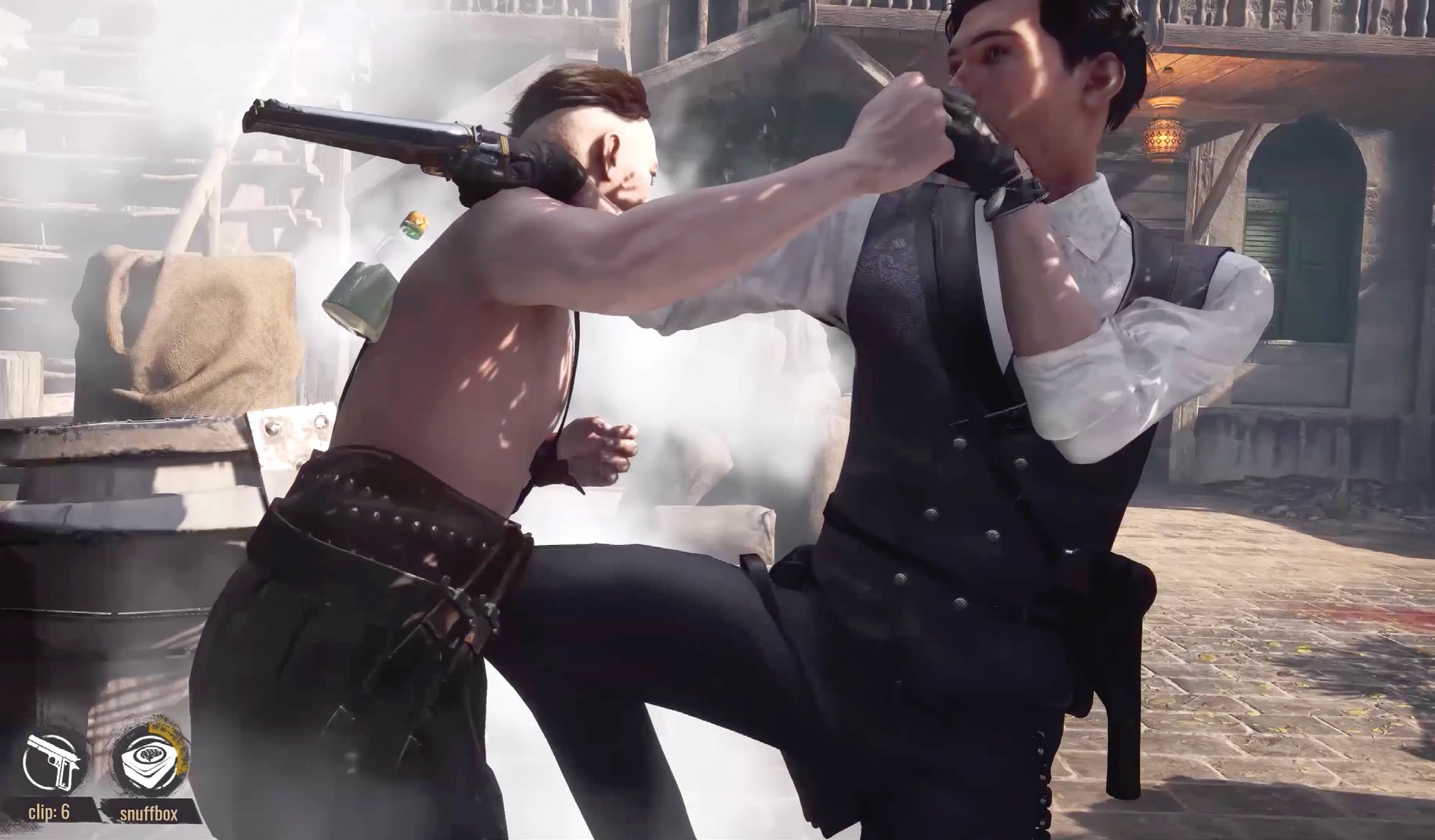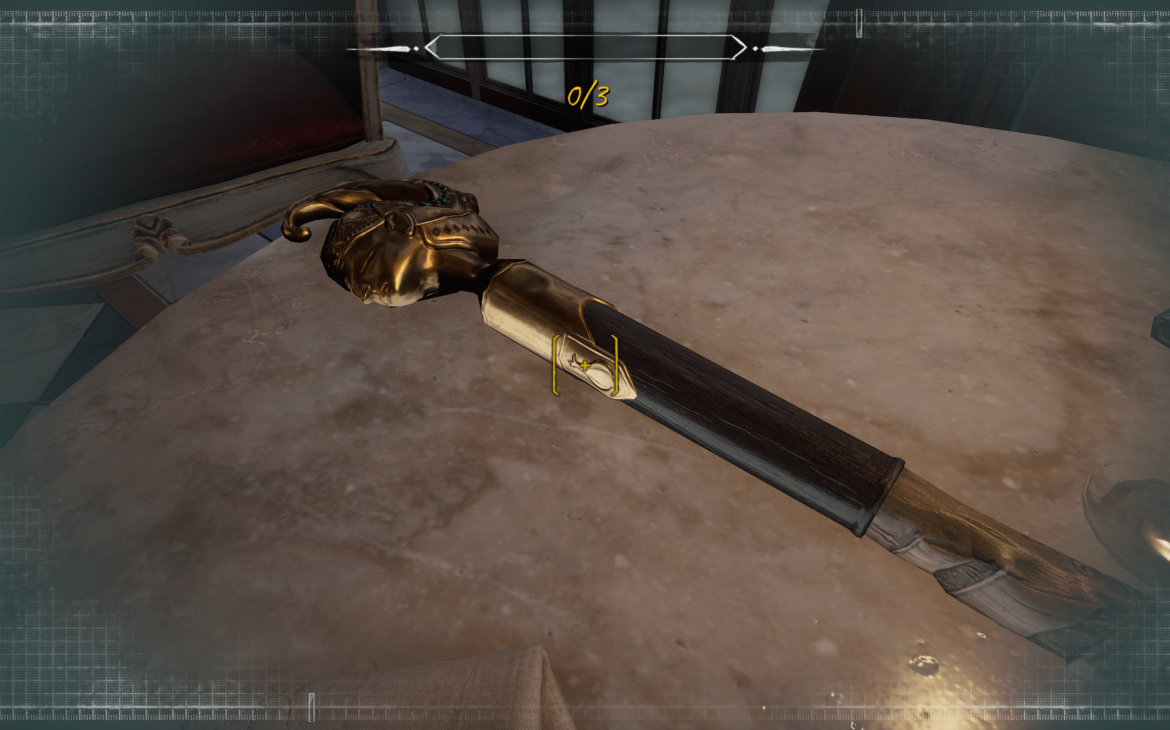A deft take on a well-trodden character, Sherlock Holmes: Chapter One is an ambitious, deeply enjoyable but mildly flawed spin on Sir Arthur Conan Doyle’s famous detective. The Finger Guns Review.
Under the stewardship of developers Frogwares, the Sherlock Holmes games have been going from strength to strength. While the developer have been making this series since 2002, it was with 2012’s ‘The Testament of Sherlock Holmes’ that it first shot into the main stream gaming subconscious. Since then, with 2014’s Crimes & Punishments and 2016’s The Devil’s Daughter, Frogwares have been steadily improving their game play formula. It’s not just the game mechanics that have been evolving either. By blending the canon of Sir Arthur Conan Doyle with their own unique spin on the detective, Frogwares have managed to create a version of the character that feels unique among the many, many different adaptations of Sherlock.
Their next title, Sherlock Holmes: Chapter One, feels like a culmination of those evolving aspects. It’s more technically and mechanically ambitious than any of the other games in the series, shifting to an open world design akin to The Sinking City while attempting to retain the detail orientated game play. At the same time, Chapter One explores a chapter of Sherlock Holmes’ life that is rarely touched upon – his early 20’s. Not quite the boy-genius he’s portrayed as in several movies and not yet the super sleuth we immediately picture in our minds when hearing his name, complete with deerstalker and pipe. This isn’t the Sherlock Holmes game’s you’ve played in the past, despite many returning game play elements, and it feels fresh because of it. With the change comes a few wrinkles however…
The Who, Where & Why
Sherlock Holmes: Chapter One begins as the titular character arrives on the Mediterranean island of Cordona. A melting pot of cultures, Cordona is split into different regions, each of which has a different look and feel to it. Sherlock once called this island home but remembers very little of his time there. Much to the chagrin of his brother Mycroft, Sherlock has decided to travel to Cordona in order to visit his late mother’s grave. He’s drawn to the location, wanting some kind of closure and thinks this is what will grant it. He’s not on the island long though before he realises there’s more to his mother’s passing than he ever believed there to be. Sherlock being Sherlock, he decides to get to the bottom of the mystery that’s steeped in his own childhood.
The version of the famous detective that we find in Sherlock Holmes: Chapter One is simultaneously unfamiliar yet comfortably falls into the lore that Conan Doyle laid out. Initially clad in a formal, stylish but slightly untidy suit, the 21 year old Sherlock is as sharp and intelligent as you’d imagine. Those legendary crime solving skills – an uncanny ability to gather evidence from a crime scene, the ability to mentally recreate a series of events, a razor sharp sense of observation, that cutting wit, the chameleon like ability to disguise himself as someone else, the ability to deduce things in his ‘mind palace’ – are all present and correct. What’s fresh and new about this version of Sherlock is his mental state. This character has always been complex and moody but the version that exists here is very obviously… incomplete. Visiting Cordona opens up some mental wounds that Sherlock has long since healed and had no idea he still even had.

That aspect of the character is most predominantly manifested in Sherlock’s companion, “Jon”. No, not Watson. This is Holmes’ imaginary friend that he still carries with him at the age of 21. Outwardly a capable human of incredible intelligence, Sherlock is internally fractured and still consults an imaginary companion everywhere he goes. Like a separate entity with its own thought pattern, Jon’s existence in this game gives it quite a unique feel. A playful spirit that plays off of Sherry (as he affectionately calls his metal host), Jon helps to guide the player through the game, acts as a kind of moral compass at times and is core to the narrative that unfolds.
Cracking The Case…
Having happened a decade earlier, Sherlock’s quest to uncover the truth behind his mother’s death is a difficult one. There’s no immediate crime scene for him to pour over so instead, he has to jog his memories, some of which he has repressed. The path to unlocking these thoughts is a winding one that leads Sherlock to other mysteries that he’ll need to solve. While it’s never as blatant as some other games that frame progression like “Oh, you need my help? Well, do this for me first” quests, it does follow that same structure. There are many people on Cordona that could use the abilities of a man like Sherlock Holmes and the youthful and exuberant consulting detective is happy to oblige, so long as it gets him closer to the truth.
The main story cases in Sherlock Holmes: Chapter One are a varied bunch which involve some of the trademark twists and turns that the source material is known for. Whether it’s investigating an arson that leads to a series of murders or attending an exotic masquerade party to find a body that looks like it was part of an occult ritual, the stories that are told here are grim but fun to explore. Many of the crime solving elements that starred in Crimes & Punishments and The Devil’s Daughter return here. You’ll be exploring crime scenes for physical evidence and quizzing witnesses or suspects. Each piece of evidence is then tracked in the game’s casebook which lists and describes each important detail.
More so than ever before in this series, Sherlock’s casebook is integral to investigation. Pieces of evidence come with corresponding icons which indicate what Sherlock can do with them. A compass symbol indicates it’s a location you’ve got to find – there’s no automatic waypoints in this game. You’ll need to read an address and pinpoint it on the open world map. From the casebook, you can trigger chemical analysis which involves mixing coloured flasks in an algebraic equation. Some evidence calls for Holmes’ trademark internalised concentration, either to analyse physical evidence like foot prints, to follow a trail or to mentally recreate a series of events. The varied tools that Sherlock Holmes: Chapter One provide to the player give a real feeling of unveiling a mystery, piece by piece.

There’s two new tools for the titular character to utilise here too, taking advantage of the open world design. The first is an excellent addition; should Sherlock be unsure of a location or a piece of evidence, he can activate it in the casebook and then ask any NPC in the open world about it. Of course, if you ask the wrong person, they won’t have an answer for you. It’s important to choose the right person and to do so in the right way. This is where Sherlock’s ability to change clothes comes in. NPC’s will respond differently depending on what he’s wearing. Walk around wearing a police uniform or an expensive suit and some NPC’s will be unhelpful and unfriendly, for example. This has been an aspect of the Sherlock Holmes games for the past few instalments but never before has it been realised quite as well as it is here.
The other new addition is one that I could have done without. Sherlock can eavesdrop in on conversations which triggers one of my least favourite mini-game from the past few years. Phrases pop up on screen and you can either flick the thumb stick up to keep that phrase should you feel like it’s important or flick it down to dispose of it as you feel it’s irrelevant. Almost every time you perform this mini-game, you’ve got very little context of what evidence you’re supposed to be collecting. The phrases almost feel random and it’s a total crapshoot until you finally find one that’s correct. More often than not, success in this mini-game is more luck than judgement.
Much like in the previous Sherlock games, there will be multiple suspects in each case and you’re free to accuse and arrest whichever you believe the evidence points towards. This is all pieced together in Sherlock’s ‘Mind Palace’ which allows the player to link together clues in order to make deductions. Once you’ve made your choice, you’ll confront your chosen culprit and send them off to the gaol/the gallows. Sometimes you’ll get a confession in the process. In other instances, the game doesn’t ever indicate whether you made the right choice of culprit. No matter the choice, the game continues on unabated.
…And Cracking Some Skulls
While combat has been creeping further into the Sherlock Holmes games over the past few entries, it becomes a fully integrated aspect in Sherlock Holmes: Chapter One. These fights take place within self-contained arenas in which ne’er-do-wells can enter from doorways in their 4 walls. Armed with a revolver, Sherlock is tasked with defending himself and arresting every criminal before he can move on. In order to do so, the titular detective has to disorientate his foes by shooting items of the environment or parts of his enemies attire. Shooting gas lamps suspended above an enemy’s head will shock them into paralysis, for example. Some enemies can be shocked into stillness by blasting the hat from their head or by popping a flask they carry on their back. During this short window, Sherlock then has to get close and complete a simple quick time event which will complete a non-lethal (although painful looking) arrest.

Some of the enemies Sherlock will encounter come prepared for a fight. They’ll be wearing pieces of armour across their arms, legs and face. Before trying to arrest these foes, you’ll have to shoot off each part of their armour. Thankfully, when Sherlock looks down the sights of his pistol, he’s granted a few seconds of slow motion which also highlights armour and opportunities to shock his opponents. When all of this is combined together, it makes for an interesting fight system that becomes its own little puzzle.
It’s a shame that all of this feels a little too clunky. While the idea is great, the execution is missing a few touches that could have seen that fully realised. Sometimes, you’ll end up running around in circles trying to get an enemy to stand close enough to a bag of power or a gas light so that you can shoot at them and trigger the QTE. In the harder fights, it felt common to run out of stunning objects in the world because you’d get so many enemies descending on you. That leaves you with one last resort – killing the enemy. Sherlock Holmes: Chapter One doesn’t prevent this – your version of Sherlock can be a cold blooded killer if you want them to be – and the only detriment will be that Jon will berate you and some characters you meet shortly after a fight will react to you differently. Thankfully, there are only a handful of fights in the main quest line. Many of the fights are optional extra’s and side quests.
Cor’doing A Lot Of Good
There’s a real wealth of side quests in Sherlock Holmes: Chapter One. As you’re out exploring the open world of Cordona, you’ll sometimes over hear (using that awful mini-game) about mysteries that pique Sherlock’s interest. Jon will also remind Sherlock of childhood memories that he can recreate. At times, you’ll have to consult the back issues at the local newspaper, files at city hall or use the police archive. The characters stationed at each one of these locations ask Sherlock to investigate certain mysteries too. Some of these side quests are on par with those in the main quest line. There’s one involving a potential vampire sighting and another about retrieving an iconic violin from some drunken sailors. While all of this is optional, every activity serves to flesh out the world of Cordona and to bring life to this version of the iconic detective.
As you complete these activities, you’ll be earning money too. This can be spent on new disguises or clothes and, more importantly, retrieving the furniture and belongings that were once housed in his family’s

Technically, Sherlock Holmes: Chapter One does have a few issues, even on the PS5. When roaming the streets of Cordona, you’ll see some noticeable frame rate drops, especially when travelling through populated areas. There’s some pop-in too, although that’s not as noticeable in much of the game due to the winding structure of the world which restricts far off views.
When I first reached the end of Sherlock Holmes: Chapter One, I was left conflicted. As the credits rolled, I was unsure of how I was going to review this game. Much like the previous Sherlock Holmes games from Frogwares, this is an ambitious title that’s unashamedly catering to its intended audience. With the move to an open world design and a heavier inclusion of combat comes a few new wrinkles, but the core experience is still as enjoyable as always. Only here, it’s larger and more fluidly put together. Bouncing from case to case doesn’t feel like the end of chapters and the start of another. Instead, Sherlock Holmes: Chapter One feels like being dropping onto an island full of fun puzzle boxes and being handed the tools to unlock them all. What’s more, much like the best mystery solving games, the best parts of the experience aren’t really in the game at all. They’re the “eureka” moments you have at home, sat on your couch or at your desk, when you finally figure it all out. Sure, the combat can be clunky, the frame rate can stutter and one of the new mini-games isn’t adding anything valuable to the experience. These flaws do little to detract from what is a deftly crafted version of Sherlock Holmes who’s following one of the strongest original stories for the character in quite some time. For fans of the Frogwares’ Sherlock Holmes games, this is the culmination of everything the studio has been building towards and I have no doubt you’ll enjoy this game as much as I have. Warts and all.
Unashamedly developed for fans of the series, Sherlock Holmes: Chapter One is a unique and deftly crafted take on a well-trodden character. Retaining its detail oriented, mystery solving core while moving to an open world design with a heavier inclusion of combat, this game retains the charm of its predecessors while pushing the series in an exciting new direction. It’s not perfect, but an excellent story and a plethora of ‘eureka’ moments make up for many of its flaws. If you loved Crimes & Punishments and The Devil’s Daughter, you’ll love this.

Sherlock Holmes: Chapter One is available now on PlayStation 5 (review platform), Xbox Series S|X, and PC. A PS4 and Xbox One release are scheduled for 2022.
Developer: Frogwares Studios
Publisher: Frogwares Studios
Disclaimer: In order to complete this review, we were provided with a promotional copy of the game. For our full review policy, please go here.
If you enjoyed this article or any more of our content, please consider our Patreon.
Make sure to follow Finger Guns on our social channels –Twitter, Facebook, Twitch, Spotify or Apple Podcasts – to keep up to date on our news, reviews and features.
